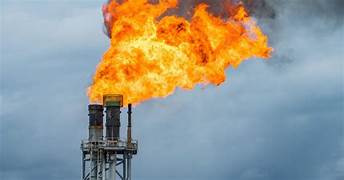India’s resolute stance to buy cheap Russian oil despite mounting pressure and sanctions from the US, has been proving not just a boon to soak inflation pressure but it also has opened great export avenues for India. India has surged to become the third largest exporter of refined fuel to Europe in October, following the US and Saudi Arabia.
In fact, India’s export of fuels to the European Union has jumped to 58% in the first three quarters of 2024, a monthly tracker report said. The sanctions had been imposed in a bid to cripple Russia’s revenue and create a vacuum in its funding for the invasion of Ukraine.
Interestingly, lack of a policy on refined oil produced from Russian crude, meant that countries not imposing sanctions could import large volumes of Russian crude, refine them into oil products and legally export them to the price-cap coalition countries.
Taking the opportunity, India became the second biggest buyer, with purchases rising from less than 1% of the total oil imported in the pre-Ukraine war period to almost 40% of the country’s total oil purchases.
“Capitalizing on the refining loophole, India has now become the biggest exporter of oil products to the EU. In the first three quarters of 2024, exports to the EU from the Jamnagar, Vadinar (in Gujarat) and new Mangalore refinery – which are increasingly reliant on Russian crude – saw a 58 per cent year-on-year rise further,” the Centre for Research on Energy and Clean Air (CREA) said in its latest report.
Reliance Industries Ltd has oil refineries at Jamnagar while Russia’s Rosneft-backed Nayara Energy has a unit at Vadinar. Mangalore Refinery and Petrochemicals Ltd (MRPL) is a subsidiary of the state-owned Oil and Natural Gas Corporation (ONGC).
This, the report said, amplified “the fact that EU Member States continued imports are expanding the refining loophole and Russian revenues from crude exports to third countries”.

Europe typically imported an average of 1,54,000 barrels per day (bpd) of diesel and jet fuel from India before Russia’s invasion of Ukraine. This has almost doubled.
While there are no restrictions or sanctions on buying/using Russian crude oil and exporting fuels like diesel derived from it, the Group of Seven (G7) nations, the European Union and Australia – called the price cap coalition countries -to first set a crude price cap of USD 60 per barrel starting December 5, 2022, and later on products like diesel to keep the market supplied while limiting Moscow’s revenue.
CREA in the latest report said India, the world’s third largest oil-consuming and importing nation, in October bought Euro 2 billion worth of crude oil from Russia, down from Euro 2.4 billion in the previous month. “China has bought 47% of Russia’s crude exports (in October), followed by India (37%), the EU (6%), and Turkey (6%),” it said.
“India was the second-largest buyer of Russian fossil fuels in October, contributing 19% (EUR 2.6 billion) to Russia’s monthly export earnings from its top five importers. An estimated 77% of India’s imports (valued at EUR 2 billion) comprised crude oil.” In September, India contributed 21% (EUR 2.8 billion) to Russia’s monthly export earnings from its top five importers. Almost 85 per cent of India’s imports (valued at EUR 2.4 billion) comprised crude oil.































